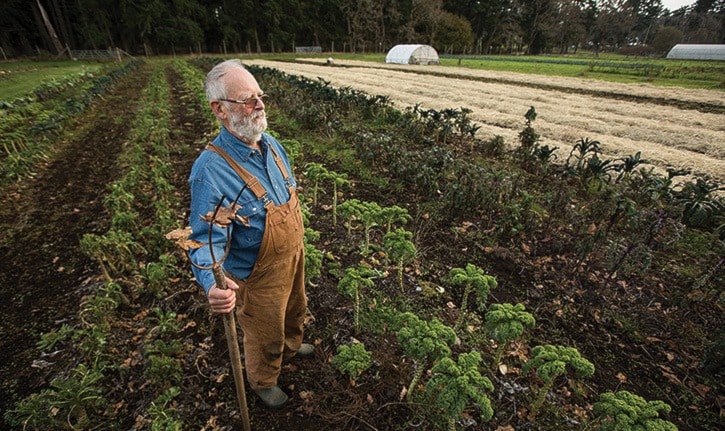Bob Mitchell doesn’t mind working hard on his 10-acre plot of land in Metchosin.
In fact, he appreciates the rural way of life farming affords him and the fact the district, so far, has ensured that lifestyle will be available for the foreseeable future.
He worries, however, that increasingly fewer young people are choosing to take on farming.
“There are tons of people that are younger and bright and (want to farm), but the problem is the cost of the land. It’s a problem faced by everyone,” he said. “The land value is so high you cannot economically justify buying it for agriculture. People like me are on inherited property.”
Mitchell has been farming the land since his father retired in 1982 and passed on to him the family’s property. Even with the continued enforcement in B.C. of the Agricultural Land Reserve, created to protect agricultural land and encourage farming in fertile growing zones, most young farmers cannot simply buy their way in, he said.
Two separate studies commissioned by the West Shore Chamber of Commerce and completed by a pair of masters students at Royal Roads University indicates an uncertain future for farming in Metchosin.
Jeff Townsend and Lisa Makar discovered evidence that indicates a succession plan and a change in infrastructure may be needed to maintain the lifestyle many Metchosinites enjoy so much.
“The culture of farming is lost when there is no succession encouragement bringing the younger generation in,” said recent RRU graduate Townsend. “The farms that are producing high quality local foods could stop producing and lie fallow … Without encouragement tied to productivity and profit, we won’t get a younger generation to come in and replace the farmers.”
Part of the research looked at how farmers near urban centres can resist pressures from nearby developing communities. Townsend and Makar focused on Metchosin, where they surveyed 52 farms and recorded responses from 11. The study, undertaken from June 2013 to March 2014, eyed both the challenges and potential opportunities for the rural community long-term, Townsend said.
“I think there are two opposing forces, including farmland being used for development and taking class 1 soils away. Losing that is a real hazard,” he said. “There is also a real problem in the replacement generation being promoted into the industry because (they can get a job paying) $60,000 to $80,000 a year, so why would they go into farming?”
Townsend said the average age of farmers in Metchosin is 57. He echoed Mitchell’s sentiment that younger generations are less able to break into farming, in large part due to the financial difficulties.
Aware of the possibility for farming to drift away from Metchosin, Mitchell, 76, has taken measures to protect his way of life.
He incorporated the land and made the constitution and bylaws such that it would be difficult to have any other uses for it than farming. Acknowledging that farmers may be enticed to “cash out” their properties to developers – something that would require legislative change provincially and zoning changes locally – Mitchell said he made the move to protect his rural lifestyle long-term.
The researchers found that 225 farms listed for the area in 2006 had decreased to 217 by 2011. Early investigations indicated the majority of those were hobby farms that grow very little produce for sale. The study determined that 100 operations were producing the majority of the approximately $6 million in combined annual revenue.
Mitchell is optimistic Metchosin will remain rural and that farming will continue to be a preferred use, but he’s concerned that moves toward amalgamation could threaten his way of life.
“If the province gets serious about amalgamation, we could get wiped out.”
The longtime farmer is not alone in his fears, Townsend said. He wondered aloud if government intervention, including a convention preventing development paired with an annuity to farmers, could lead to a driving down of land values similar to when the ALR came in. Creating more value-added products and supply chains that enable farmers and assist the food industry may also be the way to go, he said.
“Whether (this information) is good or bad, it doesn’t matter. It’s information backed up with imperial evidence,” Townsend said. He offered up a final note.
“Only eight per cent of the food that is eaten on Vancouver Island is produced here, so as far as the market goes, there is a huge potential,” he said. “It could become profitable. Food is becoming more expensive, people are valuing farmers’ markets, so there is an interest in health and there is support for farmers.”
Mitchell said developers and real estate agents continue to drop off information inquiring about developing his land, but he said he isn’t interested and plans to stay and work the lot as long as he can.
“I will farm as long as I live,” he said. “I’ve been here a long time … I am comfortable with it and I like going out and working each day and getting my fingers dirty and watching things grow.”
alim@goldstreamgazette.com
